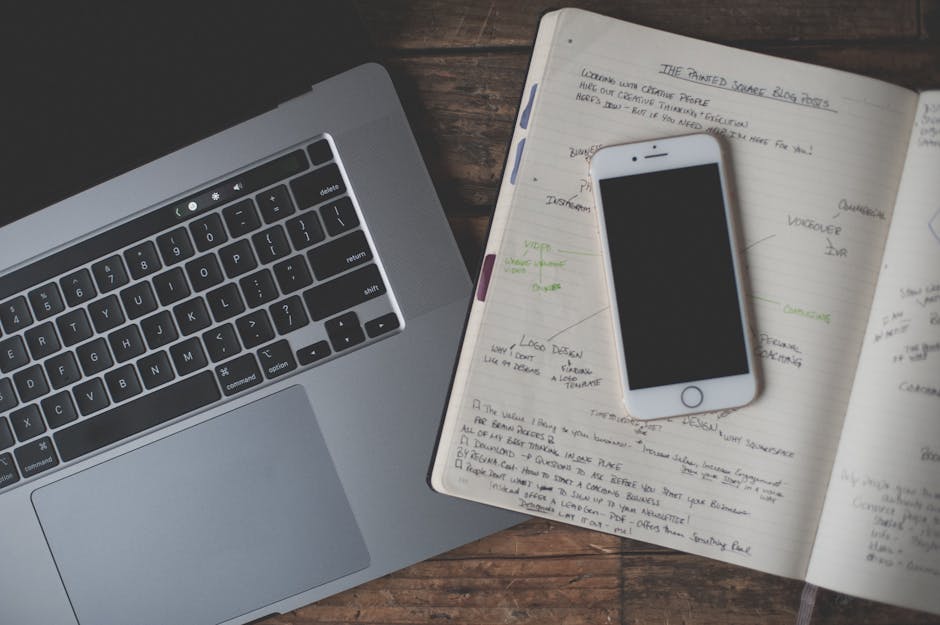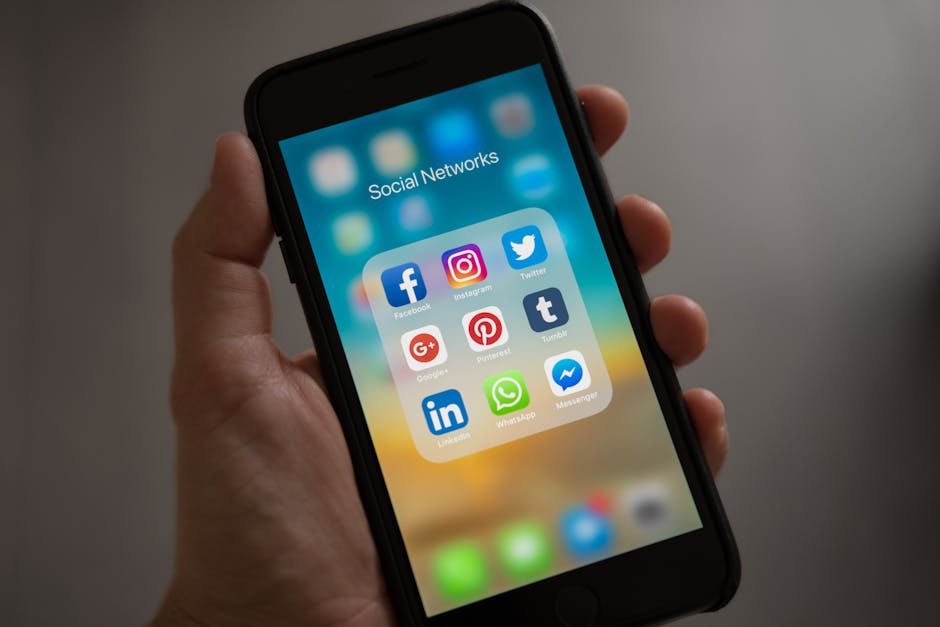So, you’re thinking about making an app for an Android phone, huh? It’s 2025 now, and pretty much everyone has one of these devices, you know, in their pocket or somewhere nearby. From checking the weather to ordering food, or even playing games that just gobble up your time, apps are kind of everywhere these days. And it’s not just the big tech companies that can put out something cool; a lot of regular people, with a good idea, they totally can too. It might seem like a really big mountain to climb, getting your own app from just an idea in your head to actually being on someone’s phone, but it’s more doable than you probably think. This whole write-up here, it’s meant to be a sort of chatty guide, just walking you through the steps, generally, on how to make your very own Android app. We’ll go through the various things, the bits and pieces you need to understand, to get your concept into a real-life application, and it is something that many find rewarding.
So, You Wanna Make an Android App, Huh? (Getting Started)
Before you even start thinking about code or what color your app will be, you really gotta sit down and figure out what exactly it is you’re trying to build. What’s the main point of this app? Is it for fun, or is it trying to help someone with a problem they keep running into? Knowing this part, what it’s for, it’s probably the most important first step, normally. You gotta have a pretty good idea, right at the start.
Next up, it’s a good idea to kinda snoop around, just a little bit, at what’s already out there. Take a look at the Google Play Store. Are there apps that do something similar to your idea? If there are, that’s not always a bad thing, you know. You can see what they do well, and maybe, more importantly, what they don’t do so well, where they fall short. This kind of looking around, it helps you figure out how your app can be different, how it can be special.
Once you’ve got a clearer picture, start jotting down what your app absolutely has to do. We call these the core features. Don’t go crazy here; try to keep it simple for the first version. What are the bare minimum things it needs to work and be useful? Anything extra, that can come later, in updates. It is often the case that less is more at the beginning, you will find.
And then, think about the people who will actually use your app. What do they like? How do they normally interact with their phones? Try to imagine them using your app. How should it look? How should it feel when they tap things? This is all about the user experience, trying to make it easy and nice to use. You could even draw some rough sketches on paper, just to get a visual sense, you know, of how things might lay out on the screen.
Picking Your Tools and Getting Your Hands Dirty
Okay, so you’ve got your idea mostly sorted out. Now it’s time to pick the actual things you’ll use to build it. For Android apps, there are two big programming languages that people generally talk about. There’s Java, which has been around for ages and powers tons of existing apps, so there’s a lot of old code out there, naturally, that uses it. Then there’s Kotlin. Google, they’re kinda pushing Kotlin as the preferred language these days. It’s newer, often considered a bit easier to write and read, and it can do all the same stuff Java can, sometimes in fewer lines of code.
For actually writing your code and putting your app together, you’re going to need a special program. This is called an Integrated Development Environment, or IDE for short. For Android, the big one, the one pretty much everyone uses, is Android Studio. It’s free, and it’s got all the tools bundled together that you’ll need. It’s a pretty powerful piece of software, normally taking up a bit of space on your computer, but it’s where all the app-making magic happens, really.
Now, sometimes, people think about building an app that works on both Android and Apple iPhones, like at the same time. For that, there are other frameworks, things like Flutter or React Native. These can be faster if you want to hit both platforms quickly, but they sometimes come with their own set of quirks, you know, some trade-offs. If your focus is just Android, sticking with Java or Kotlin in Android Studio is generally the most straightforward path, typically.
And then there’s something called the SDK, which is the Software Development Kit. Think of it as a big box of specific tools and instructions that lets your app talk to the Android operating system itself. It’s what gives your app the ability to do things like access the camera, use location services, or show notifications. Good news is, when you install Android Studio, it normally comes with the necessary Android SDK already built-in, so you don’t usually have to go hunting for it separately.
The Nitty-Gritty of Actually Building Your App
Alright, so you’ve got Android Studio installed. That’s a big first step! Now, opening it up for the first time can feel a bit overwhelming, with all the windows and buttons. Don’t worry, everyone feels that way at first, it is totally normal. You’ll want to start a new project. Android Studio normally has templates for common app types, like an “Empty Activity” or one with a bottom navigation bar, which is a good way to begin, just to see how it’s structured.
Then comes the actual coding bit. This is where you write the instructions that tell your app what to do. If someone taps a button, what happens? If they type something into a box, where does that information go? This is the core logic of your app. You’ll be writing code in either Java or Kotlin, depending on your choice, and slowly building up the functionality piece by piece, you will find. It can be a bit like putting together a puzzle, where each line of code is a tiny, tiny piece.
Making your app look good is another big part, of course. This is done by creating the user interface, the UI. In Android, you normally design your screens using something called XML layout files. These files let you put buttons, text boxes, images, and other things onto your app’s screen. Android Studio has a visual layout editor too, where you can drag and drop these elements around, which is often a bit easier than just typing out all the XML code by hand, especially when you’re starting out.
If your app needs to get information from somewhere else, like weather data from the internet, or if it needs to save things like a list of user preferences, you’ll have to set up ways for it to do that. This might mean talking to a web service using something called an API, or storing data locally on the user’s phone in a small database. These parts can get a bit more involved, but there are plenty of examples out there to help you figure it out. If you’re finding this all a bit much, or maybe your project is just too big to handle alone, you can always look for professional help. Services like Mobile app development Houston often step in when people need a hand with these more involved bits.
Testing, Tweaking, and Getting It Out There
So you’ve got an app that’s mostly built, or at least you think it is. Now comes a really, really important part: testing. You absolutely have to run your app, over and over again, on different devices and different versions of Android if you can. What works perfectly on your brand new phone might crash horribly on an older model, you know. Android Studio comes with emulators, which are virtual phones you can run on your computer, but using a real device is always, always better, normally.
When your app doesn’t work the way you thought it would, or it just stops responding, that’s where debugging comes in. It’s like being a detective, looking for the tiny mistakes or logical errors in your code that are causing the problem. Android Studio has some pretty good tools for this, letting you step through your code line by line and see what’s going on. It can be frustrating, for sure, but finding and fixing these bugs makes your app much more stable.
Before you go and release your app to the whole world, it’s a smart move to let a few trusted people try it out. This is called beta testing. Get your friends, family, or even some early adopters to use your app and tell you what they think. They’ll likely find problems you never even noticed, or suggest improvements you hadn’t considered. This kind of feedback is super valuable, really, it helps you make your app even better before its big debut.
Once you feel pretty good about your app, you need to get it ready for the Google Play Store. This involves making a nice app icon, taking some appealing screenshots, and writing a clear, inviting description of what your app does. These are the things that will make people want to download it, generally. You want to make a good first impression, obviously.
Finally, you’ll publish your app. This means creating a developer account with Google (there’s a small, one-time registration fee, typically), then uploading your app’s signed package file, along with all your promotional materials, to the Google Play Console. There’s a bit of a review process, but once it’s approved, your app will be live and available for anyone, anywhere, to download. It’s a pretty exciting moment when that happens, you will find.
What Comes After Launch? Staying Relevant, You Know.
Launching your app onto the Google Play Store is not the end of the journey, not really. It’s actually more like the beginning of a new one. Once your app is out there, it’s a good idea to keep an eye on how it’s doing. Check the reviews, see what people are saying, and normally look out for any crash reports. Users will definitely tell you what they like and, more importantly, what they don’t like, which is often very helpful information.
Based on that feedback, and also just to keep things fresh, you’ll probably want to release updates to your app. These updates can fix bugs that users found, add new features they requested, or just generally make the app better. The Android operating system itself gets updates too, so sometimes your app might need tweaks to stay compatible with newer versions, you know, to keep everything running smoothly.
People aren’t just going to magically discover your app amongst the millions of others. You’re gonna have to tell them about it, somehow. This is where a bit of marketing comes in. Sharing it on social media, telling your friends to tell their friends, maybe even writing a small blog post about it yourself. Getting the word out is important if you want people to actually download and use your creation, typically.
And if your app is supposed to make some money, you need to think about how it will do that. Is it through ads that pop up? Or maybe a subscription model where people pay a bit each month for extra features? Or perhaps in-app purchases, where users can buy virtual items or unlock levels? Thinking about how your app will sustain itself financially is an important part, if that’s your goal, for sure.
So, making an Android app, it’s definitely a bit of a journey, and sometimes it can feel like a winding road with a few bumps along the way. But the feeling of seeing your idea, that thing that was just in your head, actually working on a phone in someone’s hand? That’s something else, really rewarding. With a good idea, a willingness to learn, and some patience, you can totally do this. Don’t be afraid to just start building something; it’s the best way to figure it all out, generally. Go on, give it a shot, you might surprise yourself with what you can create.
Frequently Asked Questions (FAQs) About Android App Development
How to develop mobile app for android for free?
You can definitely develop an Android app without spending money on software. Android Studio, the main tool, is free to download and use. Many coding tutorials and resources are also free online. However, getting your app onto the Google Play Store does require a one-time developer registration fee, which is a relatively small amount, but it is typically not free, you know.
What is the best language to develop mobile app for android?
For official Android app development, Kotlin is generally considered the preferred language by Google these days. It’s more modern, often leads to less code, and has some neat features. Java is still very much in use and many existing apps use it, so there’s a huge community and lots of examples. For new projects, many people just choose Kotlin, it’s a good choice, normally.
How long does it take to develop a simple Android app?
This really depends on how simple “simple” is to you. A very basic app, like one that just displays information or has a single function, could potentially be built in a few weeks or months by someone learning as they go. If you’re talking about an app with user accounts, data storage, and a polished look, it could take much longer, generally anywhere from several months to a year, or even more for larger projects.
Can I develop an Android app without coding?
Yes, kinda. There are tools called “no-code” or “low-code” platforms, like AppGyver or Adalo, that let you build apps by dragging and dropping elements and setting up logic visually. These can be really good for simple apps or prototypes. But, they often have limitations on what you can do, and for anything more complex or custom, you usually hit a wall and still need some coding know-how, typically.
What are the costs associated with developing and launching an Android app?
The main cost for a solo developer is normally the Google Play Developer registration fee, which is a one-time payment. Beyond that, it’s mostly your time. If you need professional help, that’s where costs go up, like hiring designers or developers. There might also be costs for server hosting if your app uses an online database or APIs. So, it can be pretty low-cost if you do it yourself, or quite a bit more if you bring in others.




